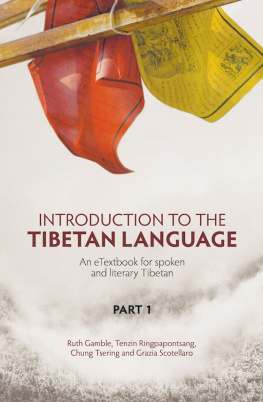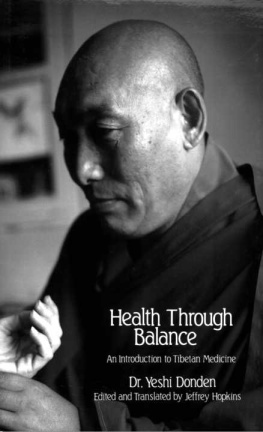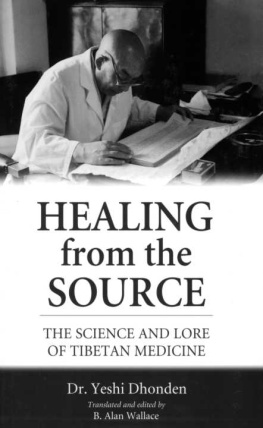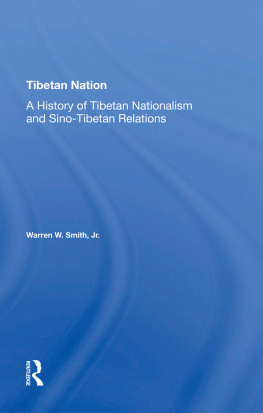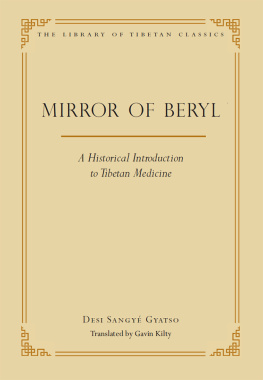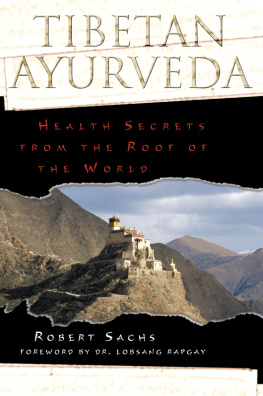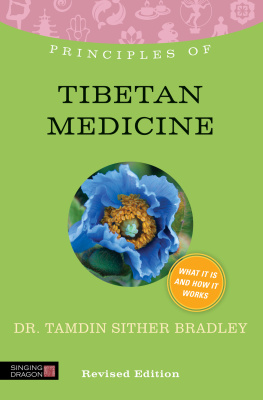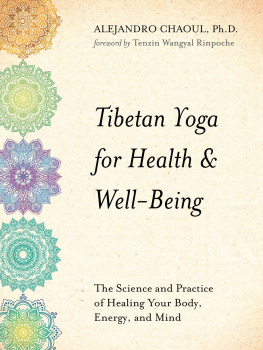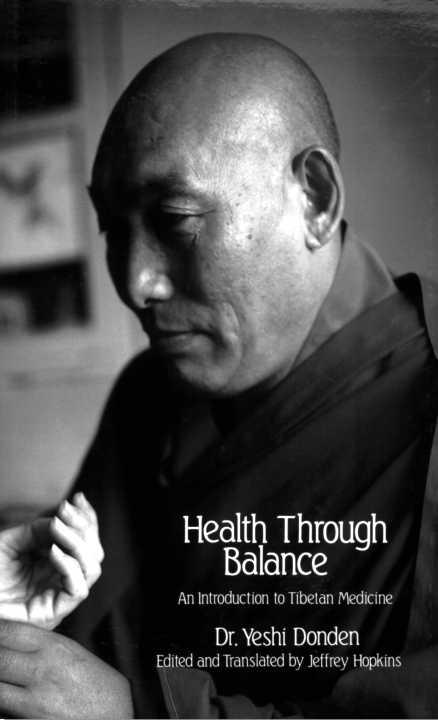
Health Through Balance
An Introduction to Tibetan Medicine
Also byJeffrey Hopkins:Meditation on EmptinessThe Tantric DistinctionEmptiness Yoga ANNOTATED TRANSLATIONS Practice and Theory of Tibetan Buddhism(in collaboration with Geshe Lhundup Sopa)Tantra in TibetDeath, Intermediate State, and Rebirth in Tibetan Buddhism(in collaboration with Lati Rinbochay)Compassion in Tibetan BuddhismYoga of TibetMeditative States in Tibetan Buddhism(in collaboration with Lati Rinbochay Locho Rinbochay, and Leah Zahler)The Kalachakra Tantra: Rite of Initiation for the Stage of Generation TRANSLATIONS Kindness, Clarity, and InsightThe Buddhism of Tibet and the Key to the Middle Way(in collaboration with Lati Rinbochay)The Precious Garland and the Song of the Four Mindfulnesses(in collaboration with Lati Rinbochay)Tantric Practice in Nying-ma(in collaboration with Khetsun Sangpo Rinbochay)Opening the Eye of New Awareness(secondary to Donald Lopez)
Health Through Balance
An Introduction To Tibetan Medicine
Dr. Yeshi DondenEdited and TranslatedBy Jeffrey HopkinsCo-translated by Dr. Lobsang Rabgay And Alan Wallace

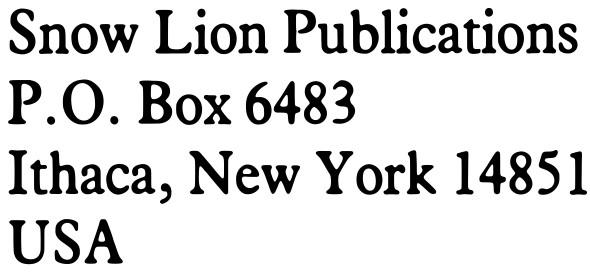
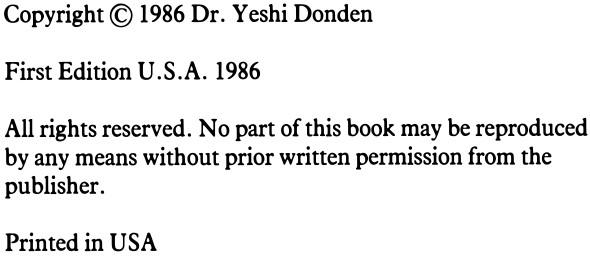

Contents
132771131187APPENDICES
Preface
During the Spring Semester of 1980 Dr. Yeshi Donden, then personal physician to His Holiness the Dalai Lama, gave an introductory course on Tibetan Medicine at the University of Virginia under the auspices of the Center for South Asian Studies. The lectures provide a glimpse into the complicated and esoteric field of Tibetan medicine. The Tibetan system, mainly derived from Indian Buddhist medicine, centers around restoring and maintaining balance between three physical factors - the three humors called wind (air), bile, and phlegm. (Though "bile", for instance, includes the bile secreted by the gall bladder, it is much more, for it is also the fluid responsible for good sight, a strong mental outlook, and so forth. Thus, the meanings of "wind", "bile", and "phlegm" are very wide.) Treatment for restoring and maintaining balance within these easily disturbed factors is through diet, behavior, medicine, and accessory therapy - the basic system having been enhanced with the practical findings of experienced Tibetan physicians who have used the system for more than a thousand years.
Dr. Yeshi Donden, after escaping to India during the Tibetan uprising in 1959, was appointed the personal phys ician to His Holiness the Dalai Lama, now in exile in northern India. Through treating members of the Indian government, the Indian army, movie stars, and so forth, Dr. Donden has gained wide fame in many parts of India. People travel from Calcutta, Delhi, and Bombay to his small complement of offices on a hillside in Dharmsala to be treated by a doctor whom many, it is clear, regard with great faith based on results that they have experienced. Dr. Donden himself is a jovial, out-going person who has borne well the rigors of re-establishing the Tibetan Medical Center and then developing his own extensive private practice in India.
His lectures begin with the origins of disease - the distant causes being the basic ignorance of beings wandering in cyclic existence due to not understanding the nature of phenomena and consequently being drawn into desire, hatred, and obscuration. These establish mind-patterns which, in turn, bring about imbalances respectively in wind, bile, and phlegm - the imbalances manifesting as myriad diseases. Dr. Donden holistically considers factors of personality, season, age, climatic condition, diet, behavior, and physical surroundings in addressing the means for restoring health.
From my own experience, albeit not that of a medical doctor but as a patient, the great strength of Tibetan medicine is that it is oriented around patients' symptoms and thus is delicately responsive to symptom clusters, no complaint being disregarded. Tibetan medicine no doubt does not have all the answers, but it has a host of techniques to respond to complicated, long-term symptom patterns. My hope is that competent persons will investigate the Tibetan medical system in a truly scientific manner so that the many benefits for chronic diseases such as hepatitis that a number of us travelling and studying in India have confirmed through our own bodies can be communicated to other parts of the world.
We are fortunate that at this time of tremendous advance in modern medical techniques there is also recognition that no one system has all the answers, and thus many have an openness to naturopathic forms of medical theory and possible cures. It is particularly fortunate that a very ancient form of medicine has remained almost entirely free from modern influence in Tibet and that at this point of the Tibetan diaspora their system can be analyzed, not just as part of medical history but also as a possible source of curative insights.
The first eight chapters as well as the one on virilification were first translated by Ven. Lobsang Rabgay, a Tibetan monk who accompanied Dr. Donden to the U.S. and who has since earned a Ph.D. in medicine in India. The ninth chapter was first translated by Ven. Jhampa Kelsang (B. Alan Wallace), a student of Tibetan Buddhism and Tibetan medicine for fifteen years and translator of Dr. Donden's book The Ambrosia Heart Tantra. I originally translated the remaining chapters and then later re-translated and edited the entire text. Because of its free-flowing form of oral lectures, the book provides an accessible introduction to the vast store of Tibetan perspectives on health.
About the author. Dr. Yeshi Donden was born in 1929 to a prosperous farming family in the southern part of central Tibet in the village of Namro in a district called Hlo-ga, one day's ride from Lhasa.' At age six, his parents sent him to a small monastery of around four hundred monks, and then at age eleven he was sent to the Medical College of the capital of Tibet, Hla-sa, due to his considerable abilities at memorization. There, he memorized the four Medical Tantras and then entered into formal training under the Director of the College, Kyen-rap-nor-bu.2 As John Avedon reports in his New York Times interview of January 11, 1981:
When he was 20, Yeshi Donden scored third in his class behind his two roommates. But because the three scores were so close, the young men were retested. Eyes closed, they were asked to identify the plants on the basis of taste and smell alone. "I was graduating that year," recalled Dr. Donden in his understated way. "My friends made little mistakes so I would come in first."
Dr. Donden began medical practice in 1951, returning to his own district and developing a high reputation for effectiveness. Then, when the Dalai Lama fled from the Chinese Communists in 1959, Dr. Donden also decided to leave Tibet for India, where he began treating Tibetan refugee patients.
With his appointment as the Dalai Lama's personal physician, he moved to Dharamsala, where he also took on the burden of founding a Tibetan Medical Center. Succeeding at that task despite the tremendous difficulties of the refugee situation, he returned to private practice in 1969, seeing a large number of patients from various walks of life and remaining as the Dalai Lama's physician until 1980. Dr. Donden continues to serve a great number of patients daily, in between frequent trips to the West to lecture on and demonstrate Tibetan medicine. His vast experience shines through the series of lectures given at the University of Virginia which comprise this book.
Next page

